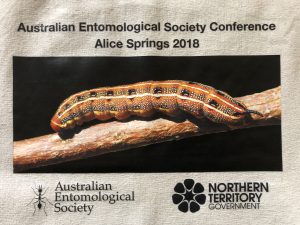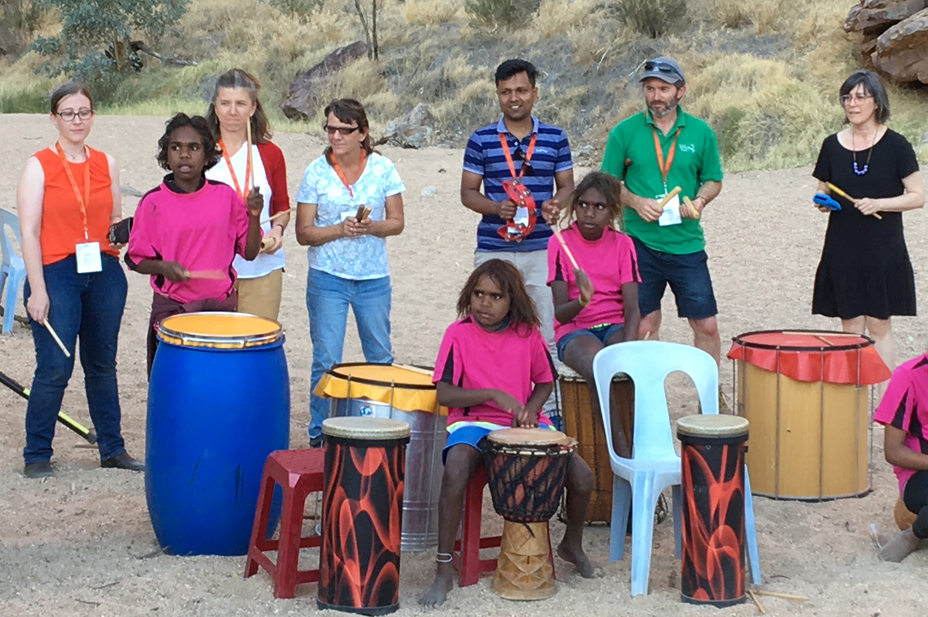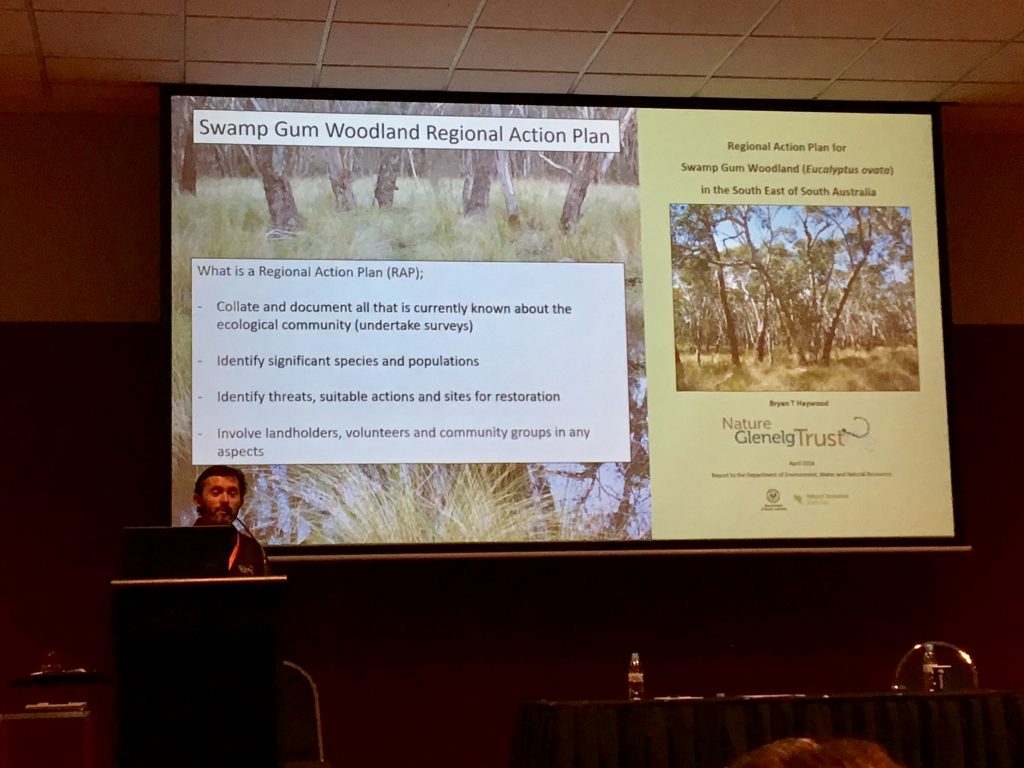Reviewing the Australian Entomological Society Conference in Alice Springs – new ventures for conservation action
 The following report is from a trip I made to the Australian Entomological Society Conference, which was held from 23-26th September 2018, in Alice Springs. I was fortunate enough to be accepted as a speaker within the Conservation Symposium and prepared a presentation about the Silver Xenica translocation that NGT and Natural Resources SE commenced here in the South East (of SA) earlier this year.
The following report is from a trip I made to the Australian Entomological Society Conference, which was held from 23-26th September 2018, in Alice Springs. I was fortunate enough to be accepted as a speaker within the Conservation Symposium and prepared a presentation about the Silver Xenica translocation that NGT and Natural Resources SE commenced here in the South East (of SA) earlier this year.
I arrived on the Saturday (22nd Sept) in readiness for a pre-conference tour with Sand Drifter Tours. Mark (our guide) picked up a bus full of delegates from our respective motels and took us out into the East MacDonnell Ranges. What a treat this tour was! The weather was perfect and Mark gave us a fabulous look around, pointing out any features of indigenous cultural significance to the Arrernte people or the more recent history since European settlement in the area began in the 1860s. Later, the entire delegation were taken out to Simpsons Gap in the West MacDonnell Ranges for a drumming welcome by the Drum Atweme group which involved some delegate participation.
On the Monday, the conference began with a welcome to country in Arrernte language, followed by Veronica Dobson and Fiona Walsh giving a joint presentation about the Alice Springs area and the relevance of the invertebrates especially caterpillars (or Hawk moths) to their culture. Interestingly, the caterpillar dreaming features on numerous interpretive signs throughout the district, raising awareness of the significance of insects to Arrernte culture and well-being. The caterpillars are creator ancestors forming the mountain ranges that surround Mparntwe (Alice Springs), they are an important food source (while feeding on the vine bush) and form an integral part to dreaming. Yeperenye was the most important caterpillar ancestral beings for the Arrernte people of Mparntwe.
For me personally, this trip to Alice Springs was difficult – as throughout my stay I felt like an ‘intruder’ (but perhaps a good intruder as I live and breathe nature) – nonetheless, two different worlds colliding was my greatest concern. I can only hope that the indigenous way can continue to flourish in the red centre.
The Conservation Symposium began after morning tea with Gary Taylor from Adelaide University. Gary spoke about the need for a ‘strategic national approach for improving the conservation management of insects and allied invertebrates in Australia’, where he detailed how each IBRA (Interim Biogeographical Regionalisation of Australia) region should aim to choose its own flagship species. Each flagship species would be an invertebrate that could engender public attention and advocacy, they could be a threatened or iconic (scientifically or socially important) species, ultimately acting as ambassador’s to raise broader awareness and the need for conservation action for invertebrates. Interestingly, all Australian states deal with invertebrate conservation and protection differently in their respective legislation. Unfortunately, South Australia doesn’t even acknowledge insects as being an animal, so therefore insects are not part of the National Parks and Wildlife Act 1972, or its threatened species schedules. So, there is clearly a gap in SA’s biodiversity laws that requires attention.
Several other speakers addressed the conference on lepidopteran conservation matters from the significance of roadside vegetation and butterfly populations in southern Queensland; to a predation of Xenica butterflies by European wasps project in Tasmania; to the promotion of the ‘Butterflies Australia Project’ addressing data deficiency in insects using citizen science; to conserving a biodiversity hotspot in the monsoon tropics of Northern Australia.
I then gave my presentation on the Silver Xenica butterfly translocation project, outlining why we needed to translocate adults and eggs from western Victoria to South Australia. Current State and Commonwealth legislation does not list this butterfly as ‘at risk’ under any Act. However, based on available literature for the South East region of SA and local field data of no individuals since 2007, the Silver Xenica could be considered ‘critically endangered’, and nearing extinction in SA.
Nature Glenelg Trust is aiming to prevent this from occurring by increasing the population through translocation, a priority action from the Swamp Gum Woodland Regional Action Plan. Interestingly, during and after my presentation the main question I received was not about the conservation of the butterfly, but about the logistics and permits required to undertake a cross-border translocation. Maybe there might be a few more in the future!!
Michelle Sargent, previously an NGT Graduate Intern and now an Authorised Officer with Natural Resources SE, also attended the conference and presented a poster about her Masters research at Mt Burr Swamp on ‘Invertebrate Biodiversity as an indicator in wetland restoration’. Michelle has a November sampling trip scheduled to continue this great work.



